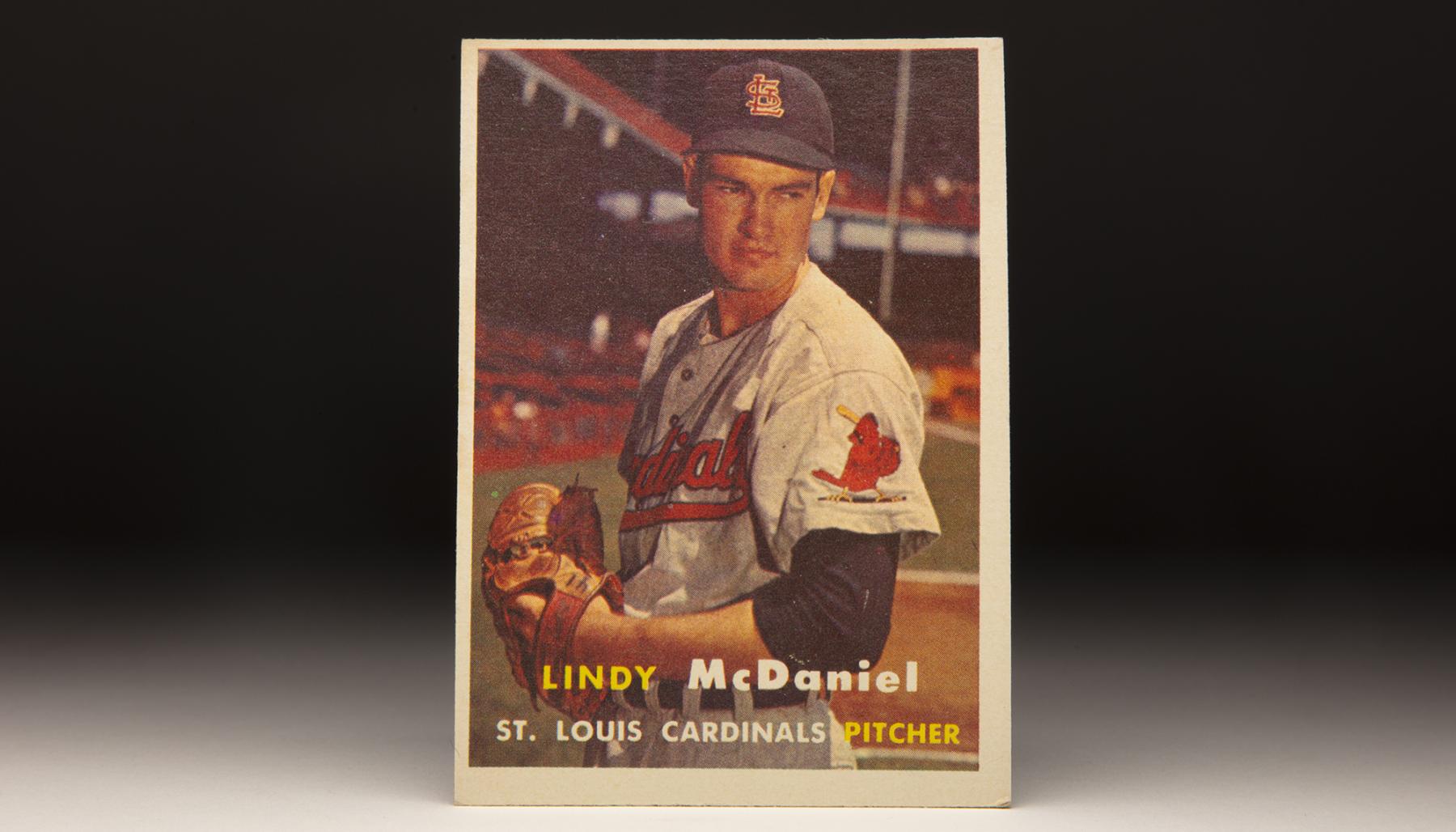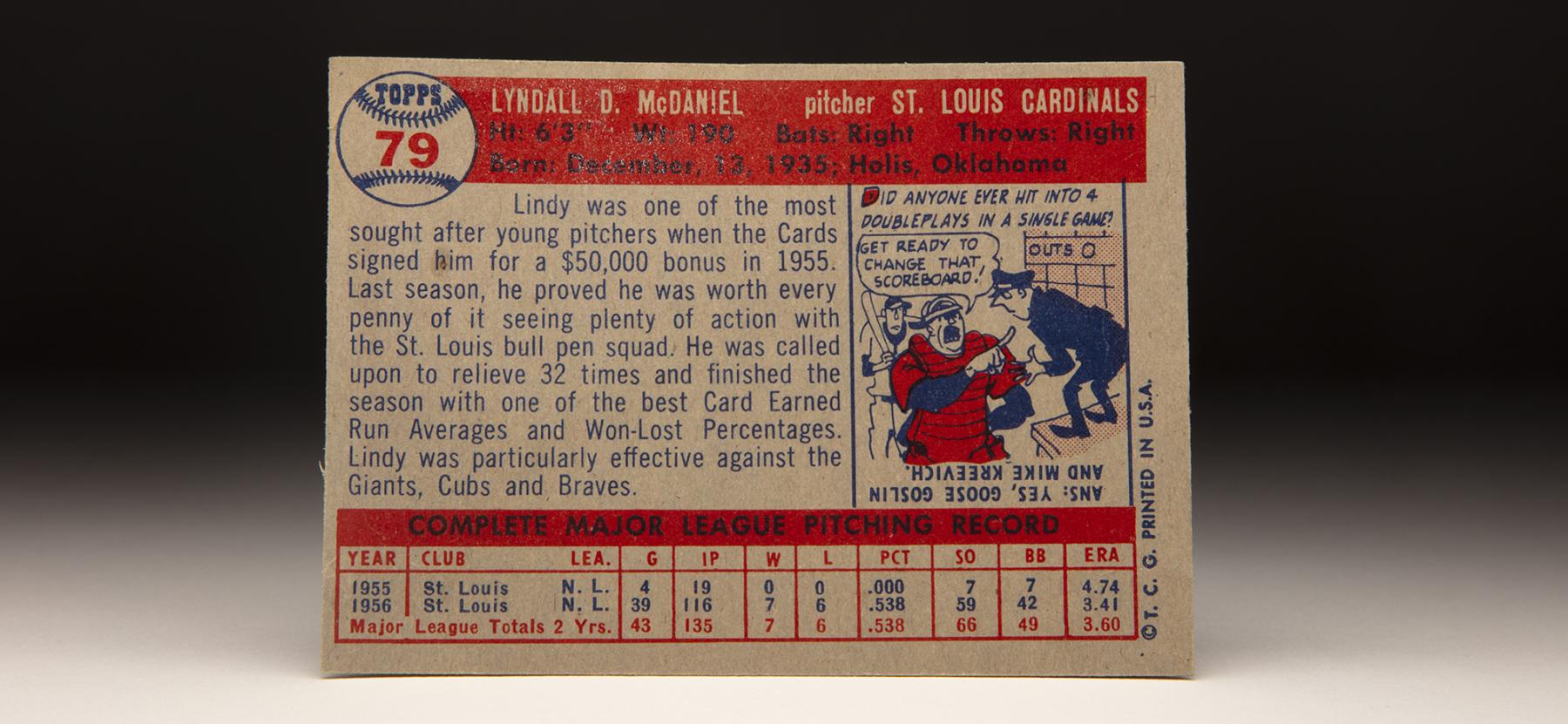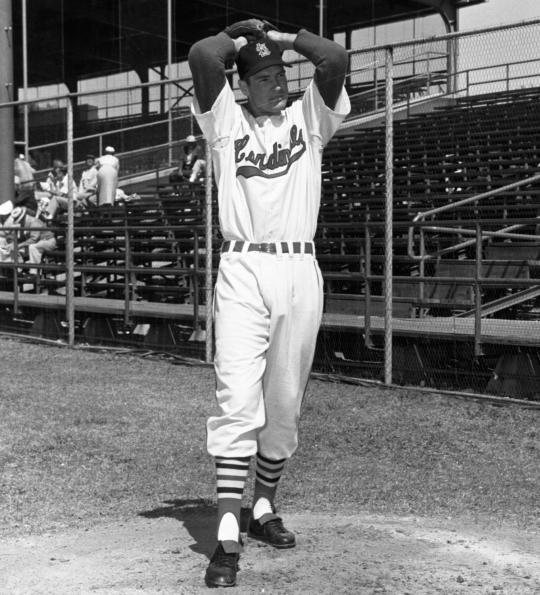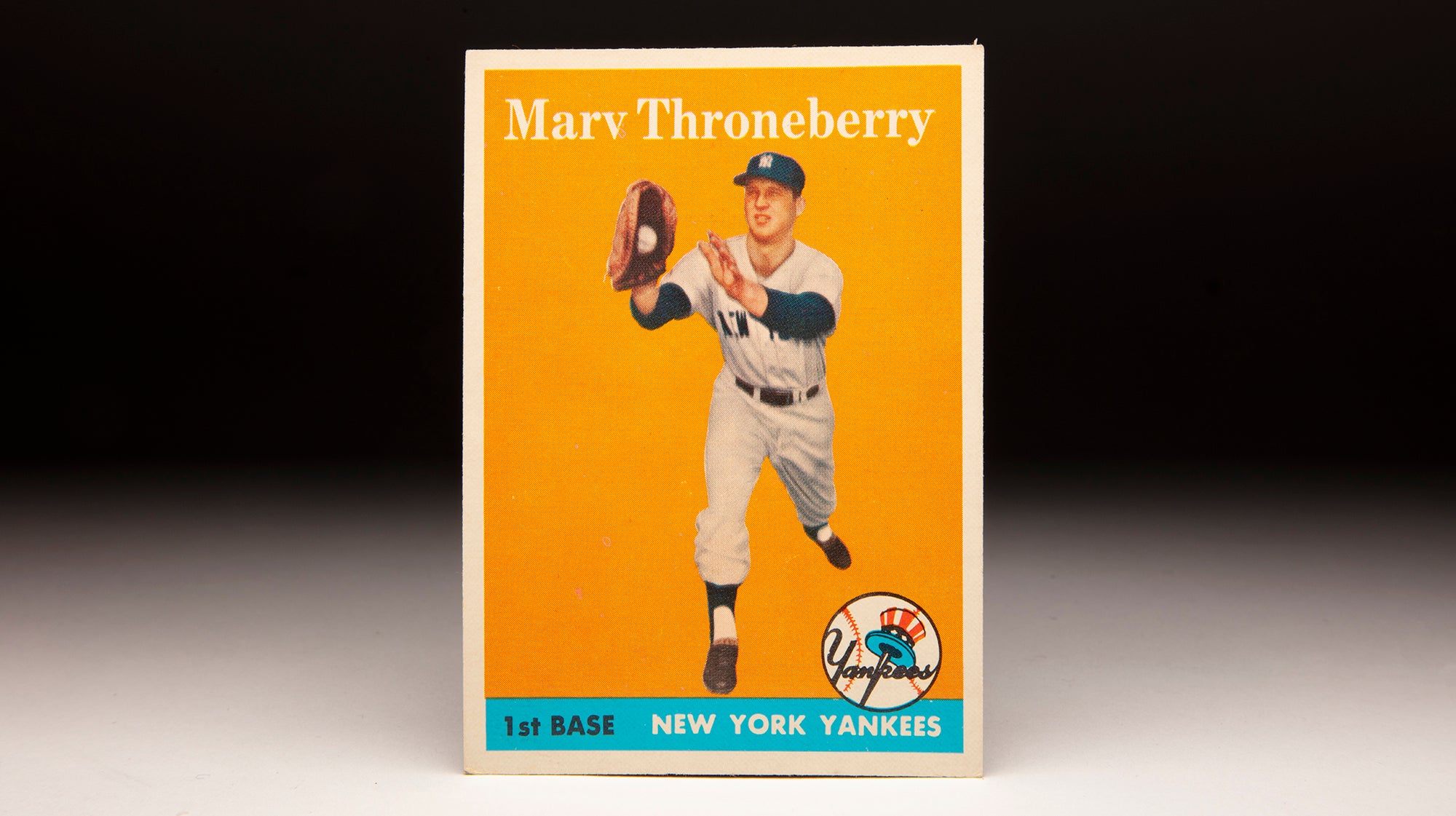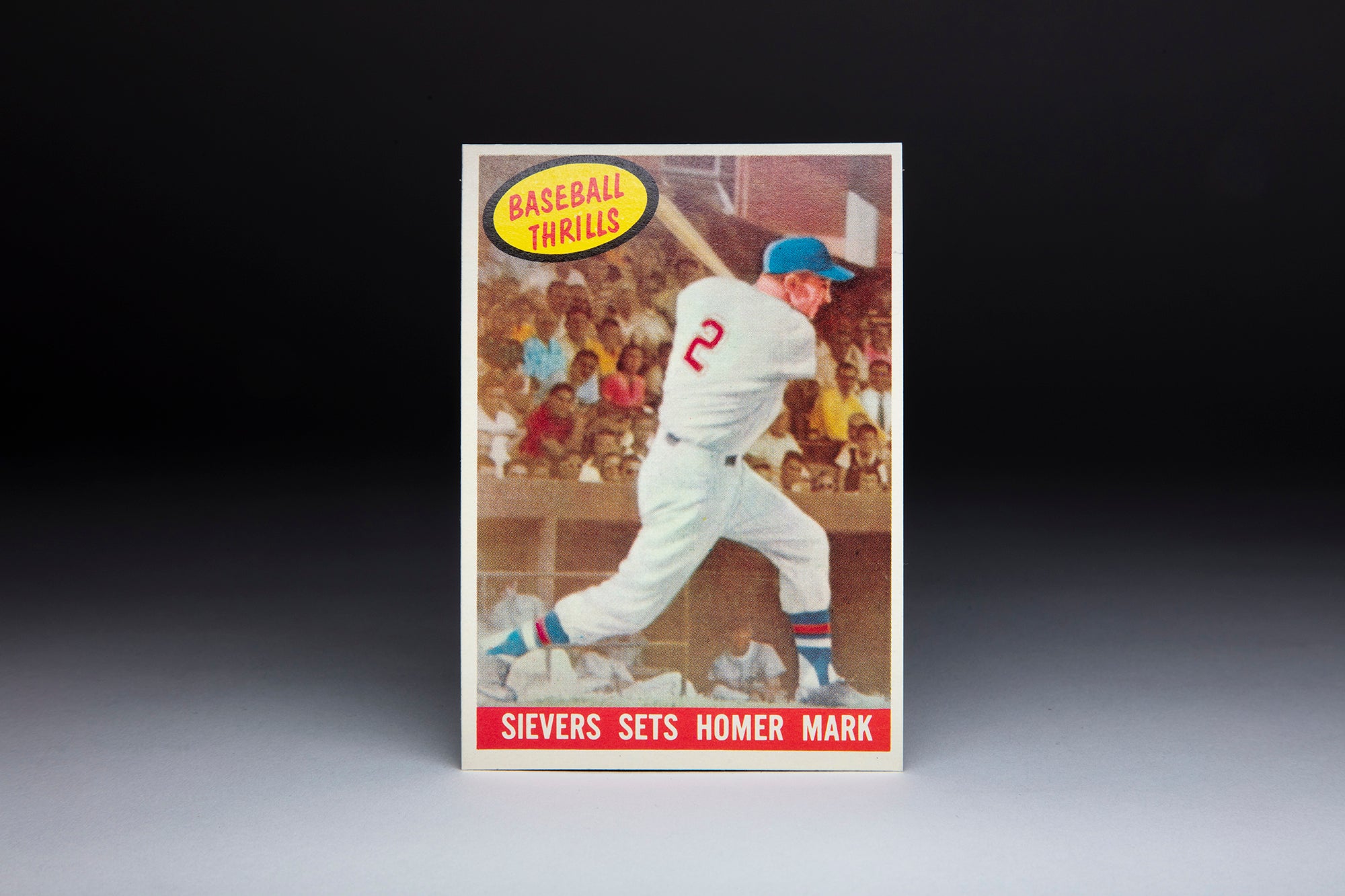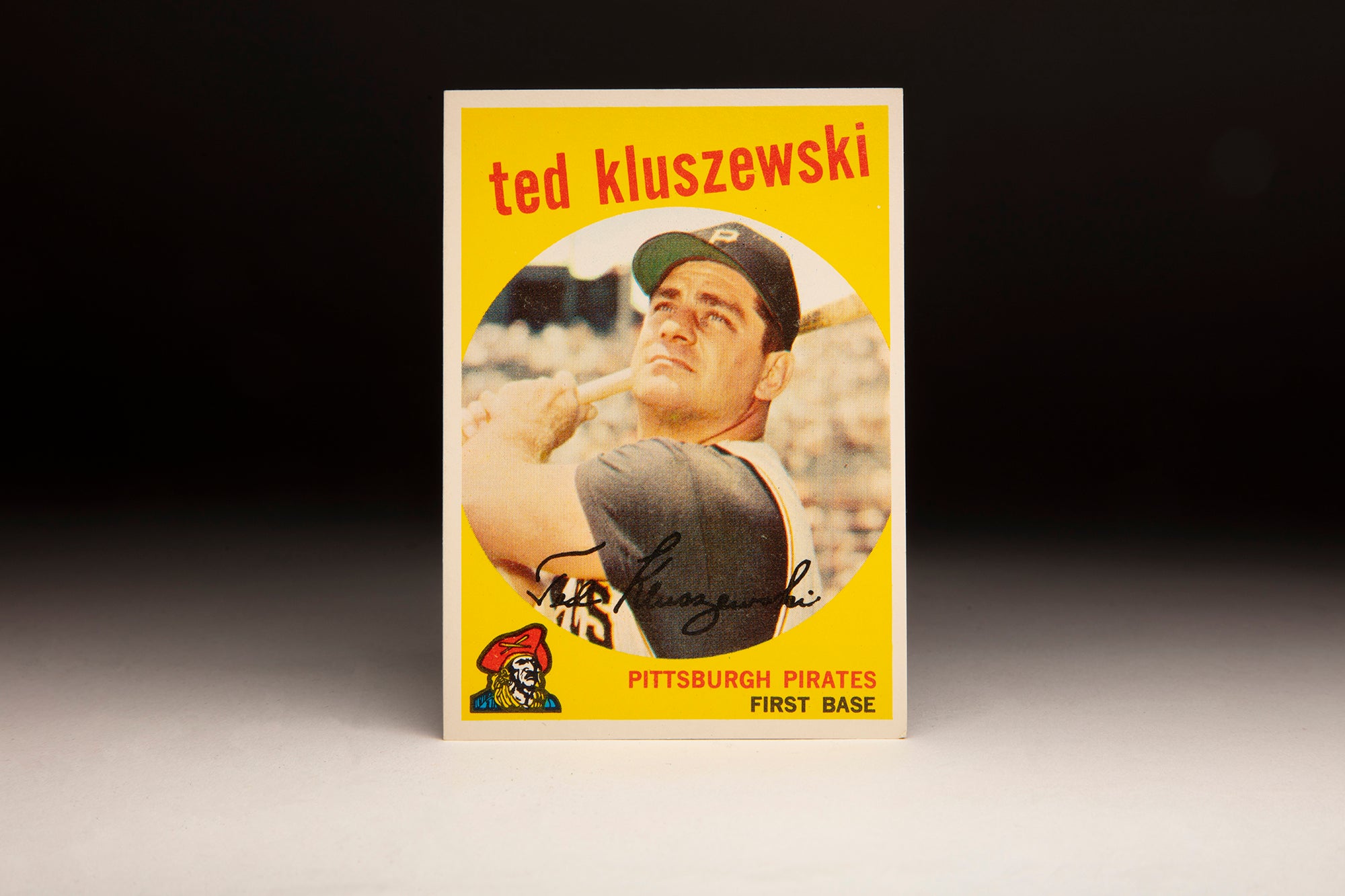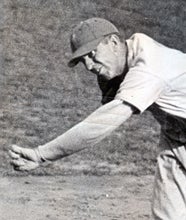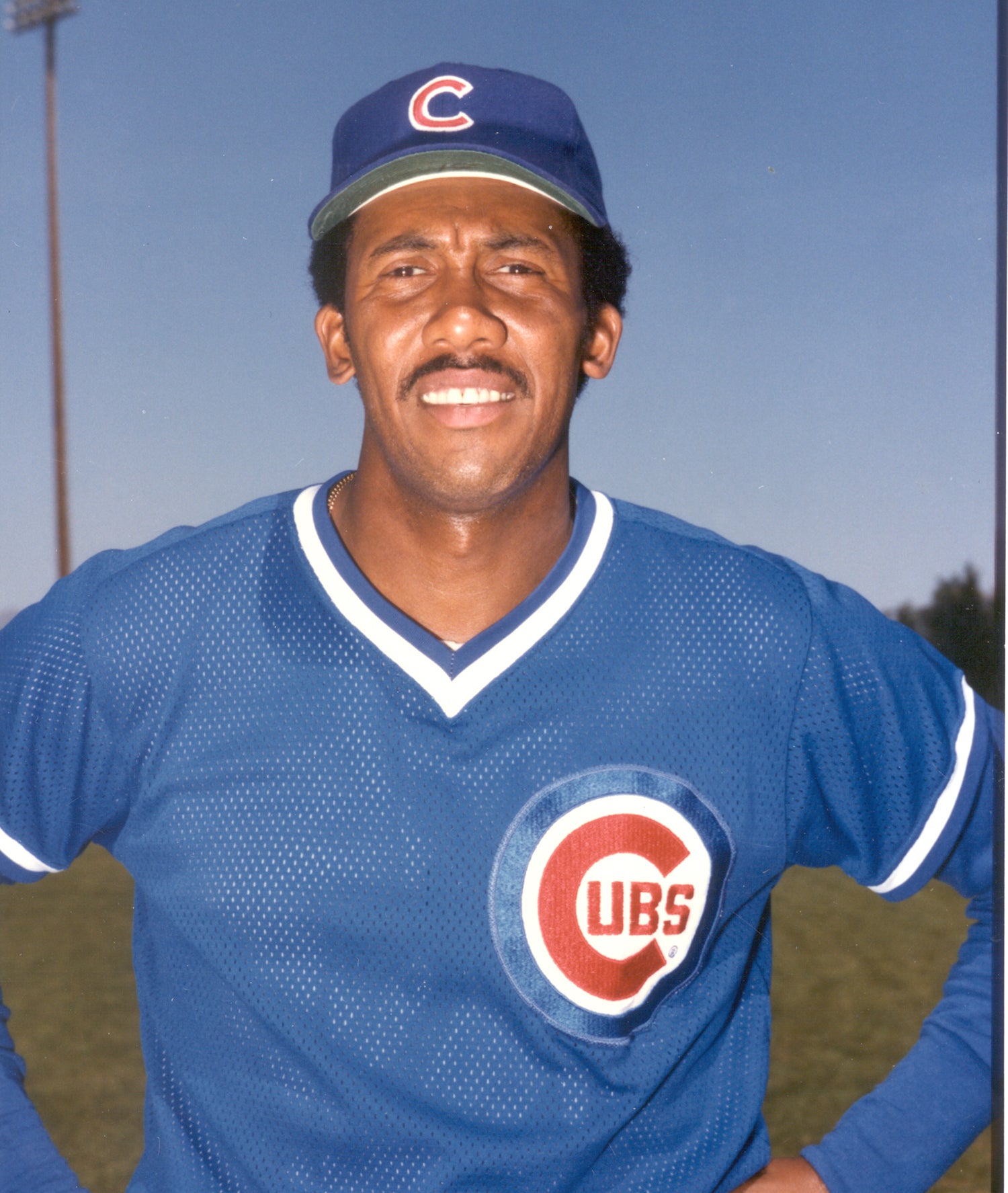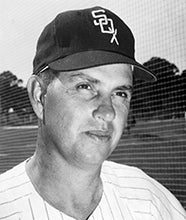- Home
- Our Stories
- #CardCorner: 1957 Topps Lindy McDaniel
#CardCorner: 1957 Topps Lindy McDaniel
When Lindy McDaniel announced his retirement at the end of the 1975 season, he had pitched in 987 games, winning 141 while saving 174 more.
With the exception of Hall of Famer Hoyt Wilhelm – who retired with 1,070 games pitched, 143 wins and 227 (later changed to 228) saves, perhaps no other pitcher built the blueprint for the modern relief pitcher better than the preacher from Hollis, Okla.
Official Hall of Fame Merchandise
Hall of Fame Members receive 10% off and FREE standard shipping on all Hall of Fame online store purchases.
Hall of Fame Membership
There is no simpler, and more essential, way to demonstrate your support than to sign on as a Museum Member.
Born Dec. 13, 1935, Lyndall Dale McDaniel picked up his nickname as a tribute to aviator Charles Lindbergh and quickly made a name for himself as an amateur athlete in American Legion ball and semi-pro stops. The Cardinals began scouting McDaniel in high school, but he accepted a basketball scholarship to the University of Oklahoma – located about three hours east of his hometown.
But on Aug. 19, 1955, McDaniel – after just one year at OU – signed a bonus contract with the Cardinals for a reported $50,000.
By rule, he would have to immediately join the big league squad for which he rooted for as a youngster.
McDaniel made his debut on Sept. 2 against the Cubs, working his way into the starting rotation. In four games (two starts), he worked 19 innings without a decision, posting a 4.74 ERA.
Following the season, McDaniel enrolled at Abilene Christian College – pursuing religious studies. It would be a passion he would maintain for the rest of his days.
“By going into Major League Baseball, I’ll get to know more people,” McDaniel told the Associated Press following the 1955 season. “It’ll give me a chance to take Christianity into baseball, and I can decide later about (pursuing work as a minister).”
But in just four appearances for St. Louis, McDaniel had already put himself on the track to big league stardom.
“I’ll repeat: That boy may never have to go down to the minors,” Cardinals manager Harry Walker told the St. Louis Post-Dispatch after McDaniel’s first start – one in which Ernie Banks hit his record-setting fifth grand slam of the season off McDaniel.
In 1956, new Cardinals manager Fred Hutchinson used McDaniel as a spot starter/reliever, and McDaniel responded with a 7-6 record and 3.40 ERA over 116.1 innings. He won a place in the rotation the following year, going 15-9 with a 3.49 ERA over 191 innings and tying Larry Jackson for the team lead in victories.
That season – when the Cardinals finished in second place behind the champion Braves in the National League – also saw the big league debut of McDaniel’s brother Von, who burst onto the scene as an 18-year-old phenom by going 7-5 with a 3.22 ERA while throwing a two-hitter against the Dodgers and a one-hitter a month later against the Pirates. Von McDaniel remains the youngest pitcher ever to record a complete game one-hitter.
But dreams of a McDaniel brothers dynasty would be short lived. Saddled by mechanical problems and a sore arm, Von appeared in just two games in 1958 and never pitched in the big leagues again. Lindy’s 1958 season was also troubled, as he went 5-7 with a 5.80 ERA and was moved to the bullpen. He endured a month-long demotion to Triple-A Omaha before returning to the Cardinals in September, but McDaniel’s future was cloudy entering Spring Training of 1959 – a status that did not improve when he was forced to stop in Meridian, Miss., for an emergency appendectomy while driving to the Cardinals’ spring base in St. Petersburg, Fla.
After seven starts in 1959, McDaniel was 2-5 – prompting manager Solly Hemus to move him to the bullpen. It was a decision that changed the trajectory of McDaniel’s career.
“I just feel that I am a natural relief man,” McDaniel told the Associated Press after allowing just three earned runs over 25.1 innings in June, compiling a 3-1 record and six saves along the way. “I was trying to pace myself when I was starting. You just can’t do that up here in the majors. Too many guys can hit it out of the park.
“You have to have failures to learn what you must know to succeed.”
McDaniel finished the 1959 season with a 14-12 record and 3.82 ERA over 62 games, earning a big league best 16 saves (retroactively counted, since the save did not become an official statistic until 1969). The next season – employing his trademark curveball and emerging forkball – McDaniel was 12-4 with a 2.09 ERA and 27 saves, earning selections to both All-Star Games while finishing third in the Cy Young Award voting and fifth in the NL Most Valuable Player balloting.
He earned the save in the NL’s 6-0 win over the AL in the second All-Star Game that summer. And of his 65 appearances that year, just two were starts – ones in which he allowed 12 earned runs over 12 innings. Without those two starts, McDaniel’s ERA for the season would have been 1.29.
The Sporting News named him its first recipient of its NL reliever of the year award.
Now firmly established as a reliever, McDaniel was 10-6 in 1961 but posted only nine saves and saw his ERA balloon to 4.87. In 1962, McDaniel was 3-10 with 14 saves and a 4.12 ERA. The latter was a season of extremes for McDaniel, who had a 4.01 ERA on May 31 before recording a string of 15 straight appearances without an earned run. But in his last 15 games of the season, McDaniel was 1-5 with a 7.36 ERA.
The Cardinals, needing to shore up their outfield, traded McDaniel, Jackson and Jimmie Schaffer to the Cubs on Oct. 17, 1962, in exchange for All-Star right fielder George Altman, Don Cardwell and Moe Thacker. It would be a lopsided trade that would benefit Chicago for years.
McDaniel went 13-7 with a 2.86 ERA and a league-leading 22 saves in 1963 – and was especially tough against St. Louis, posting a 2-0 record and three saves while allowing no runs over 14 innings. Jackson went 14-18 but had a sparkling 2.55 ERA, then won an MLB-best 24 games a year later before serving as the main trade piece that the Cubs used to acquire future Hall of Famer Fergie Jenkins in 1966.
Altman played only one season in St. Louis.
McDaniel, meanwhile, was 1-7 with a 3.88 ERA in 1964 but still saved 16 games. He bounced back with a career-high 71 appearances in 1965, going 5-6 with a 2.59 ERA in a long relief role.
Following the 1965 seasons, the Cubs traded McDaniel and Don Landrum to the Giants for pitcher Bill Hands and catching prospect Randy Hundley.
“(McDaniel) is a guy who can come in from the bullpen in the middle of a jam and get you out of an inning,” Hall of Famer Carl Hubbell, then the Giants’ director of player development, told the San Francisco Examiner. “There’s nothing wrong with his control.”
In 1966, McDaniel posted a season similar to his outstanding 1960 and 1963 campaigns, going 10-5 with a 2.66 ERA in 64 games. But arm woes limited him to just 41 games in 1967 – and with a 7.45 ERA through 12 games in 1968, the Giants traded him to the Yankees on July 12 in exchange for Bill Monboquette.
Once again, a change of scenery revitalized McDaniel, who went 4-1 with 10 saves and a 1.75 ERA in 24 games for New York.
Now 33 years old, McDaniel entered the 1969 season with a rebuilding Yankees team that was restocking its farm system. McDaniel was 5-6 with five saves and a 3.55 ERA for an 80-81 New York squad that season, then once again captured national headlines in 1970 when he went 9-5 with 29 saves and a 2.01 ERA over 62 games.
“I ask him every day how his arm is and how far he thinks he can pitch that day,” Yankees manager Ralph Houk told the New York Daily News. “I watch (him) very carefully. He means a great deal to me.”
McDaniel struggled in 1971 on the heels of his 111.2 innings pitched the year before, going 5-10 with a 5.04 ERA. Then in 1972, McDaniel’s season started slowly after having surgery in the offseason to remove a salivary gland and his wisdom teeth. Meanwhile, the Yankees moved Sparky Lyle – who had been acquired from the Red Sox on March 22, 1972, into the role as the team’s main reliever.
Lyle had a historic season, going 9-5 with a 1.92 ERA while saving 35 games. McDaniel was 3-1 with a 2.25 ERA over 68 innings.
Then in 1973, McDaniel posted his sixth double-digit win campaign as a reliever – going 12-6 with 10 saves and a 2.86 ERA over a whopping 160.1 innings – his most since 1957 when he was a starter.
Perhaps deciding to capitalize on McDaniel’s season, the Yankees traded the soon-to-be 38-year-old McDaniel to the Royals on Dec. 7, 1973 in exchange for Lou Piniella and Ken Wright.
McDaniel, pitching back near his home in the nation’s heartland, was 1-4 with a 3.46 ERA in 106.2 innings in 1974, then went 5-1 with a 4.15 ERA in 78 innings in 1975 at the age of 39.
He announced his retirement before the Royals’ 5-2 loss to the Twins on Sept. 25, 1975, pitching a perfect ninth inning before appearing in each of Kansas City’s next two games – finishing his career with four straight scoreless appearances.
“I made up my mind to retire about 10 days ago,” McDaniel told United Press International. “After 21 years, I felt I’d lost something: Motivation.”
But with his deep faith – which led him to become a minister in the Church of Christ – McDaniel never lost the desire to be his best.
“It’s hard,” said McDaniel, who passed away on Nov. 14, 2020, “to separate baseball life from private life.”
Craig Muder is the director of communications for the National Baseball Hall of Fame and Museum

